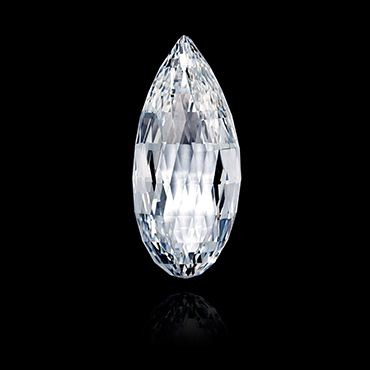A diamond worthy of a crown
This spectacular diamond has passed through a number of important collections over the years. It is classified as the very rare Type IIa, which signifies that it is devoid of impurities and imperfections, giving perfect clarity of light. Combined with the Briolette’s size, this makes it an exceptional gemstone. Another well-known Type IIa diamond is the famous Koh-i-Noor, now in the British Crown Jewels.
The briolette cut, which gives this diamond its name, is a symmetrical faceted pear shape, which maximizes the reflection of light and is therefore appropriate for pendants. Used in the jewels given by the French emperor Napoleon to his consorts, it became fashionable in the early 13th century AH/19th century.
The Briolette of India was cut into its present elongated diamond shape by the pioneering Paris-based diamond cutter and dealer Atanik Eknayan. This diamond was then acquired by the great jeweler Louis Cartier in AH 1327/1909 CE. It passed twice through the hands of the American jeweler Harry Winston, was reputedly worn as a turban ornament by an Indian maharaja, and was included in an iconic image by the fashion photographer Richard Avedon for Vogue magazine.
The “Briolette of India”
Diamond, 90.38 ct.
The Al Thani Collection, ATC1153

